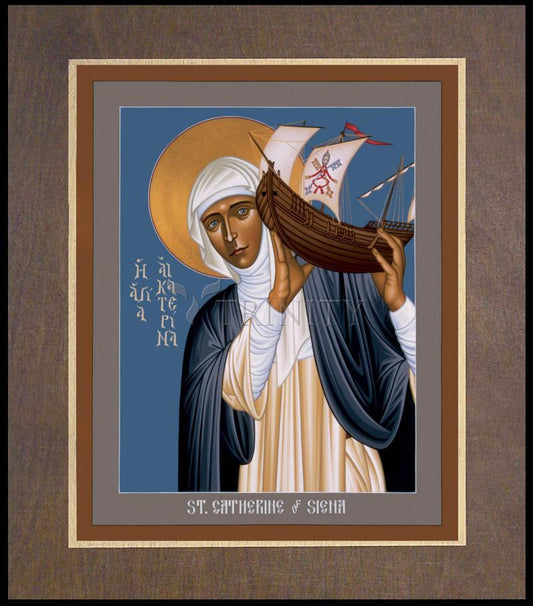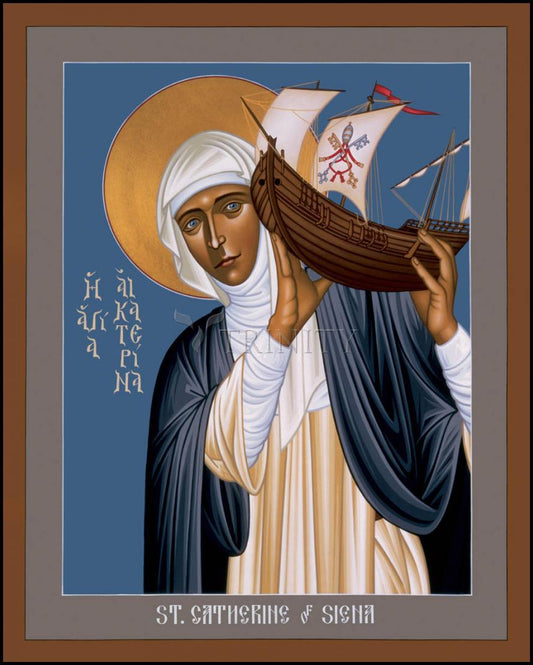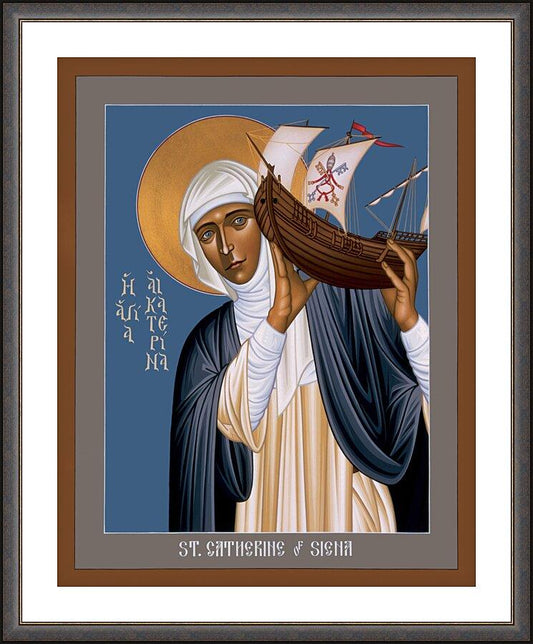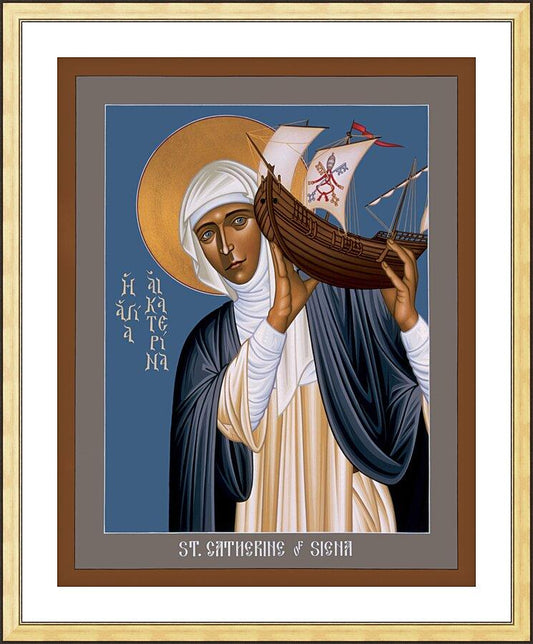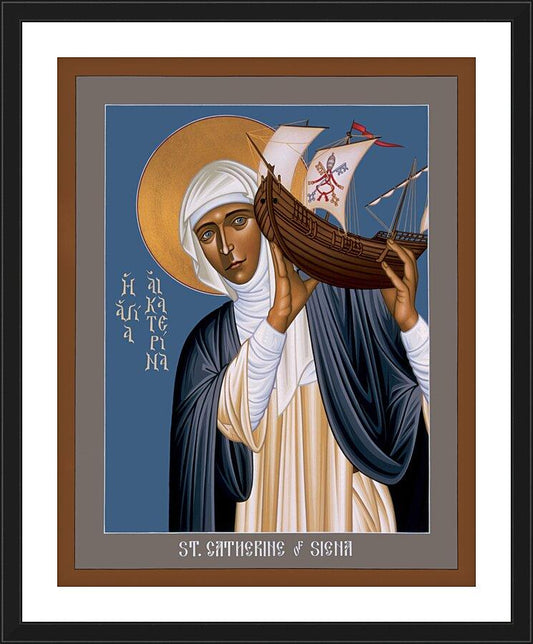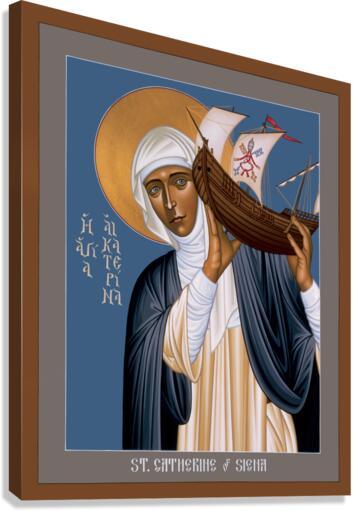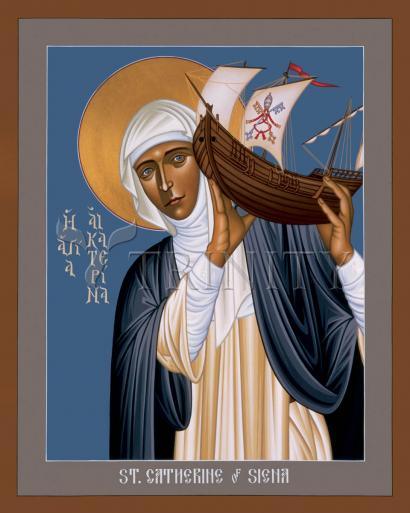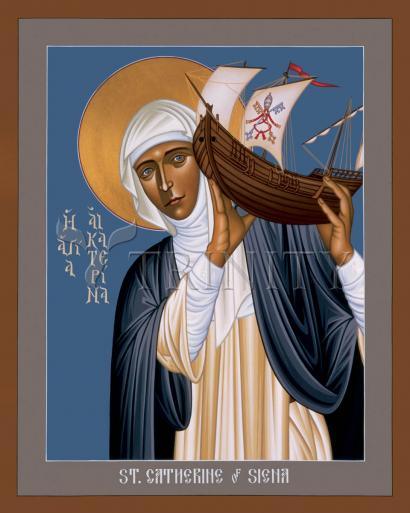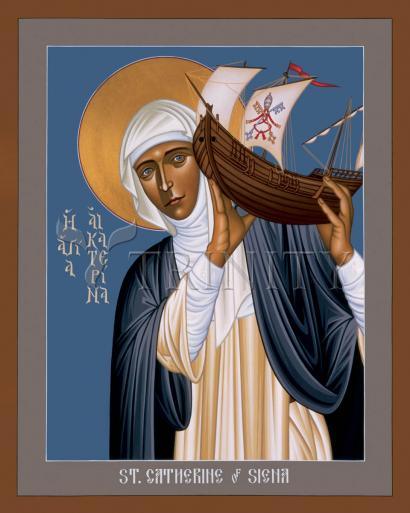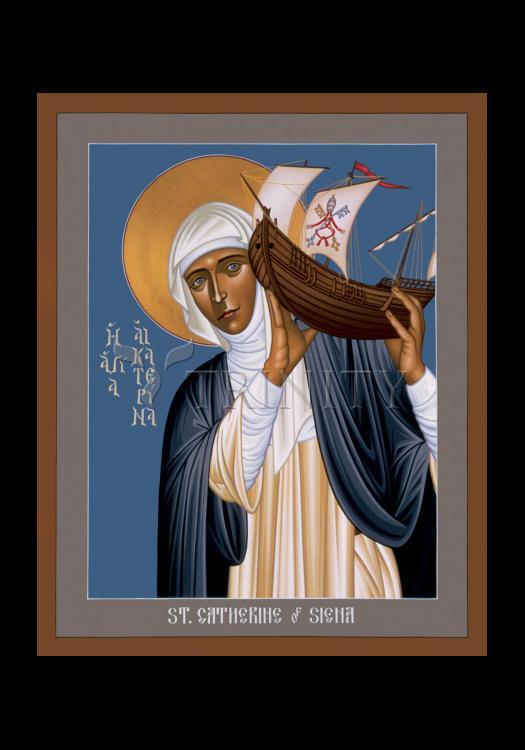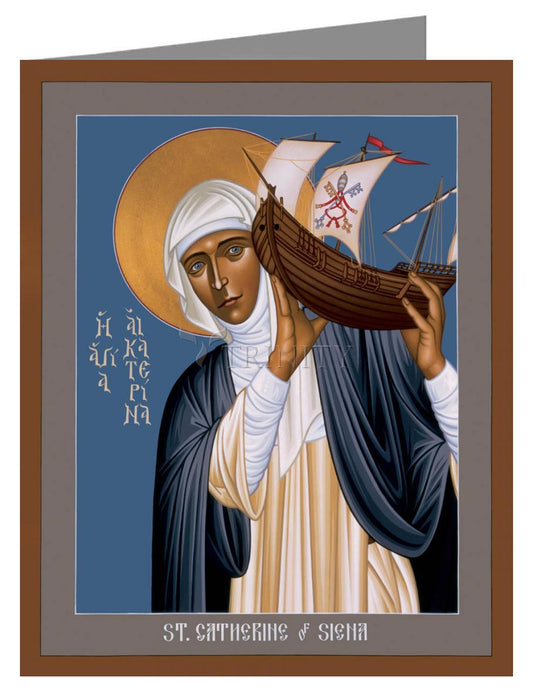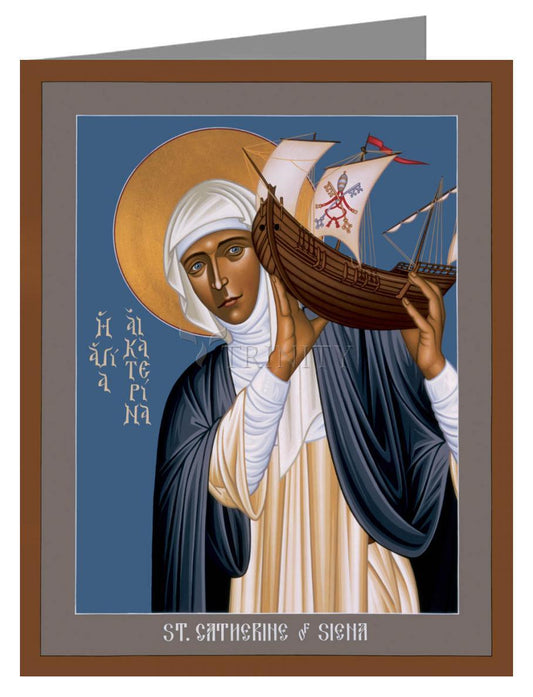Caterina di Giacomo di Benincasa was born on 25 March 1347 in black death-ravaged Siena, Italy, to Giacomo di Benincasa, a cloth dyer who ran his enterprise with the help of his sons, and Lapa Piagenti, possibly the daughter of a local poet. The house where Catherine grew up is still in existence. Lapa was about forty years old when she prematurely gave birth to twin daughters, Catherine and Giovanna. She had already borne 22 children, but half of them had died. Giovanna was handed over to a wet-nurse and presently died. Catherine was nursed by her mother and developed into a healthy child. She was two years old when Lapa had her 25th child, another daughter named Giovanna.[6] As a child Catherine was so merry that the family gave her the pet name of "Euphrosyne", which is Greek for "joy" and the name of an early Christian saint.
Catherine is said by her confessor and biographer Raymond of Capua O.P.'s Life to have had her first vision of Christ when she was the age of five or six. With her brother, she was on the way home from a visit to a married sister and is said to have experienced a vision of Christ seated in glory with the Apostles Peter, Paul, and John. Raymond continues that at age seven, Catherine vowed to give her whole life to God.
Her older sister Bonaventura died in childbirth. While tormented with sorrow, sixteen-year-old Catherine was now faced with her parents' wish that she marry Bonaventura's widower. Absolutely opposed to this, she started a massive fast, something she had learnt from Bonaventura, whose husband had not been considerate in the least. Bonaventura had changed his attitude by refusing to eat until he showed better manners. This had taught Catherine the power of fasting. She disappointed her mother by cutting off her long hair as a protest against being overly encouraged to improve her appearance to attract a husband.
Catherine would later advise Raymond of Capua to do during times of trouble what she did now as a teenager: "Build a cell inside your mind, from which you can never flee." In this inner cell she made her father into a representation of Christ, her mother Lapa into the Blessed Virgin Mary, and her brothers into the apostles. Serving them humbly became an opportunity for spiritual growth. Catherine resisted the accepted course of marriage and motherhood, on the one hand, or a nun's veil, on the other. She chose to live an active and prayerful life outside a convent's walls following the model of the Dominicans. Eventually her father gave up and permitted her to live as she pleased.
Born: March 25, 1347 at Siena, Tuscany, Italy
Died: April 29, 1380 of a mysterious and painful illness that came on without notice, and was never properly diagnosed
Canonized: 1461 by Pope Pius II
Name Meaning: Pure one



